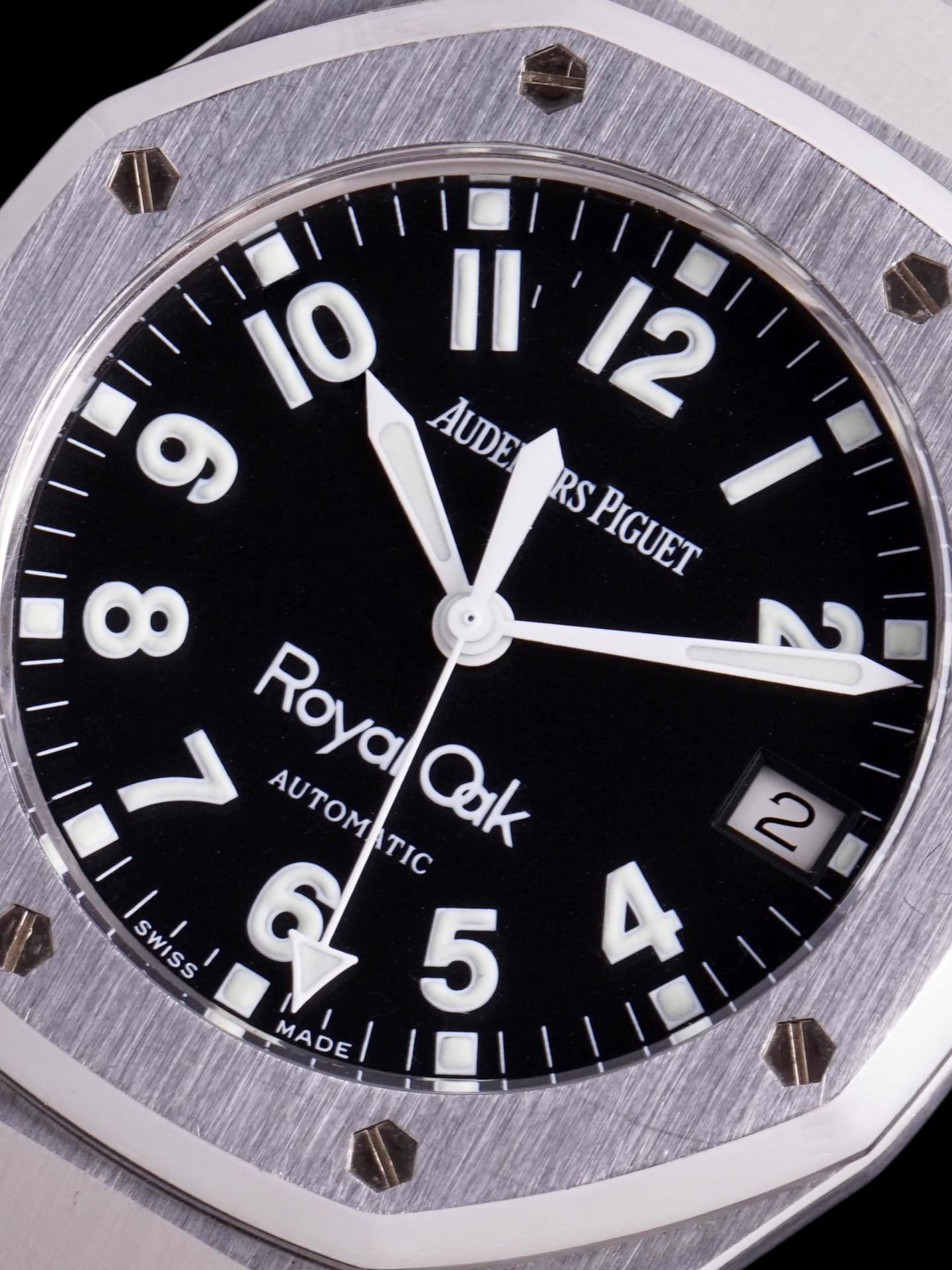But not always is its use warranted, leaving many let down following purchases guided by articles just like this one. Having said all this, let’s not excitedly hype up the next big thing, and instead look back at one such case of deserved appreciation — that of the “military dial” Royal Oak from Audemars Piguet.
In order to see what makes this watch so very special, and perhaps why it went under the radar for so long, one must first have an understanding of the Royal Oak collection’s ethos and history. As most watch-interested types have come to know, the design was penned by none other than Gerald Genta, who’s also renowned for his design of the famed Nautilus. With the help of Audemars Piguet and Patek Philippe, Genta redefined what a luxury timepiece was through the initial offering of both watches in hard-wearing stainless steel. What this proved was that through masterful, intricate design, a watch crafted from even the most spartan of metals could achieve a luxurious feel.


It’s this notion that makes the military dial variant of the Ref. 14790 ST so compelling, as it contradicts the Royal Oak’s unwritten mission statement of making stainless steel watches feel high end. This can be seen upon inspection of its defining details. In place of the traditional and now iconic baton-shaped indices, Audemars Piguet finished this form of the reference with large and luminous arabic numerals, along with large applications of text on its dial. All this is traced by a set of similarly luminous, sword-shaped hands, affording the watch an indisputable military tool-watch feel.

As alluded to earlier, these facets add up to something that pulls the stainless steel timepiece further back in the direction of the knocked around tool watch, yielding somewhat of an un-Royal Oak Royal Oak, if you will. For a good long while, this unconventionality was seen as something to be avoided within the range of references, making military dial-equipped examples the choice of many looking to get a Royal Oak on their wrist without entirely breaking the bank. Eventually, as tastes diversified and military watches grew more popular, 14790 ST’s fitted with this dial and handset combination would earn renown of their own in the minds of important collectors.



The lesson here is that otherness isn’t to be avoided and instead embraced, as time and time again, it’s those once regarded as oddballs that emerge as the “it” watch. Not convinced? Just review the prices now commanded by Paul Newman Daytonas and Beta 21-powered Pateks. Should you be so bold and seasoned, then remember the prices at which you passed on examples in decades past. The point being, going against the grain has its benefits.
In today’s market and collecting world, the military dial Royal Oak rightfully stands out as one of the most compelling iterations of the model to date, enjoying a singular prominence amongst a sea of conventional, back catalog variants. What makes it most compelling is the fact that such a dial ever gracing a Royal Oak again is more than unlikely, considering the definite luxury-focused approach taken by the brand in recent years. They’re no longer the relative deal they once were, but there’s no denying their appeal, suggesting a bright future for the variant.

Check out 'Reference Tracks' our Spotify playlist. We’ll take you through what’s been spinning on the black circle at the C + T offices.

Never miss a watch. Get push notifications for new items and content as well as exclusive access to app only product launches.
Sign up for our newsletter to receive updates and exclusive offers